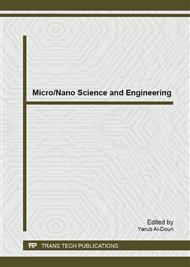p.3
p.8
p.13
p.18
p.23
p.28
p.33
p.38
Behavior of Ferro-Cement Slabs Modified by Polymer under Low Velocity Impact
Abstract:
Ferro-cement is a type of thin reinforced concrete made of cement-sand mortar mixture with closely spaced of relatively small diameter wire meshes. The main aim of this work was to study investigate the behavior of Ferro-cement slabs under impact loading. A total of 36 Ferro-cement slabs were constructed and tested under low velocity impact, The main parameter considered in the present investigation was number of wire mesh layers, content of (SBR) polymer and height of falling mass (falling velocity). A special testing rig was used to achieve the impact forces using a falling mass (1300 gm steel ball) dropped from (2.5, 1.2 and 0.83 m) height. (500 ×500×50 mm) slabs were used for each test. The polymer (SBR) was used as a ratio by weight of cement of 3%, 5% and 10%. The number of required blows for caused the first crack and final failure was recorded. The results exhibited that the number of blows which were required to make the first crack and failure, increased with increase of polymer content and number of wire mesh layers.
Info:
Periodical:
Pages:
3-7
Citation:
Online since:
April 2014
Keywords:
Price:
Сopyright:
© 2014 Trans Tech Publications Ltd. All Rights Reserved
Share:
Citation:


